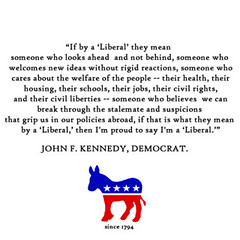If you haven't heard, Barack Obama is taking the train from Chicago to Washington as part of inaugural procession (as opposed to a quick closed-car trip around the White House that Bush took). That doesn't just mean he's taking it slowly getting there, it equals big news for mass transit and particularly train travel in this country that has been neglected for far too long. And just this week, Congress showed continued interest in getting a high speed rail line started between the political capitol and the financial capitol of the nation.
From The Washington Times:
That is just the beginning. Other regional high speed rail links are slated for the future (though it really should be sped up, places like Texas and Florida need networks desperately).Congressional transportation leaders plan to announce today that the federal government is seeking contractors to build a new $30 billion to $40 billion high-speed rail line between Washington and New York that would be used exclusively by passenger trains.
Amtrak's current Northeast Corridor rail line is shared with freight and commuter trains, which can significantly increase the length of time it takes for passengers to arrive at their destinations.
The rail line for which Congress seeks contractors is the first of a series of nationwide high-speed passenger rail lines the government is considering funding, according to a congressional aide.
Now letting Amtrak operate the lines could be a good or bad thing. Current commuters know that the slow trains cost a hefty price ($63 each way offpeak for starters) between NYC and DC. One can imagine the cost of a train that cuts the time in half. So what they need to do is not only fund the new tracks, but continue to give assistance to the national railline to make ticket prices competitive, just not to the degree where they're BoltBus competitive. Then when there are enough networks onboard and the volume of business can sustain Amtrak, federal subsidies can be lessened.
Mass transit is an essential part of our 21st century economy, and we need to believe in it with our dollars. Even if it costs a hundred or two hundred billion in the long run, it is still a much wiser investment than what we have given to the financial services sector in the last few months.











|